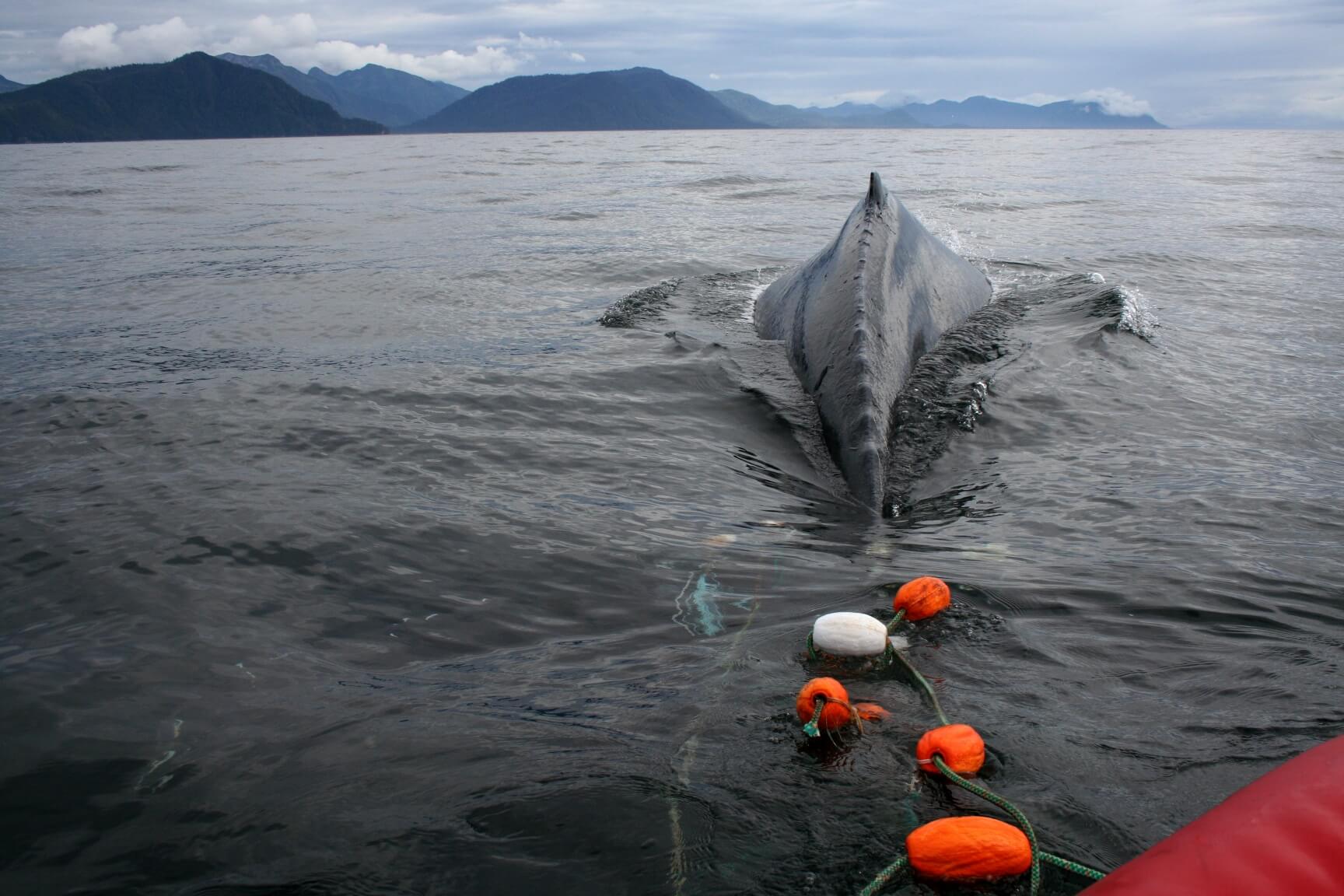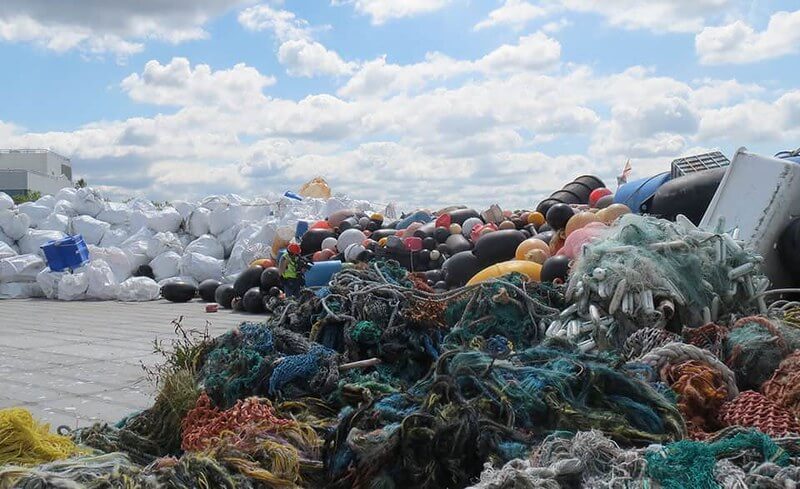If you follow whale-related issues at all, you’ve probably already heard of ghost gear. Some of our readers might be scratching their heads: What are these phantoms lurking in the shadows of our oceans? What is their impact on whales? Far from being supernatural creatures, ghost gear is fishing equipment that has been abandoned, lost, or discarded into the sea. In most cases, the losses are accidental and are caused by the gear getting caught on the seafloor, entanglement with other gear, adverse weather conditions, or damage caused by maritime traffic.
Fisheries and Oceans Canada estimates that between 600,000 and 800,000 tonnes of ghost gear end up in the oceans every year. That’s the equivalent of about 10,000 blue whales! Ghost fishing gear thus represents nearly 10% of the total volume of trash in our oceans. But even if it represents a mere one-tenth of the garbage at the bottom of our oceans, this gear is currently the biggest source of plastic pollution in the marine environment. After all, it is made of highly durable plastic materials such as nylon, polyethylene, or polypropylene. Between 46 and 70% of the microplastic particles currently suspended in ocean waters are thought to come from the extremely slow decomposition of these synthetic fibers.
Deadly traps
Even it is no longer actively used, ghost gear was designed for one specific purpose: to catch fish. And that it does, even if it is resting on the ocean floor or being washed along by sea currents. Ghost fishing then becomes a sort of harvest without a harvester. Every year, the presence of this gear causes a significant number of accidental entanglements of fish and marine mammals, many of which result in injuries or mortality.
Ghost gear also contributes to the degradation of the aquatic landscape. It covers the seabed and damages ocean habitats. Corals are particularly vulnerable: Ropes and drifting nets break, crush, and suffocate them, causing their premature death and endangering the fauna that usually make their home there.
Solutions put into action
In recent years, the impacts of ghost gear have been receiving more and more attention. As a result, efforts are being ramped up around the world to rid the oceans of this waste. In 2020, Canada created a Ghost Gear Fund to support 26 projects that address this issue. A number of these projects will aim to recover ghost gear. Others will focus on developing new technologies to improve recovery and recycling strategies. Still, other projects aim to rethink the design and composition of future fishing gear in order to make it less lethal and less polluting.
In 2020, Canadian clean-up efforts (article in French) removed 63 tonnes of ghost gear from the Atlantic Ocean, 14% of which came from the St. Lawrence River. In some cases, the gear was able to be returned to its owners. The remaining gear was entrusted to specialized centers that receive support from the Ghost Gear Fund to develop new processes for sorting and recycling fishing gear in order to divert as much as possible from landfills.
Clean-up operations have also been scheduled in the Pacific for 2021. Results for the year are forthcoming.







